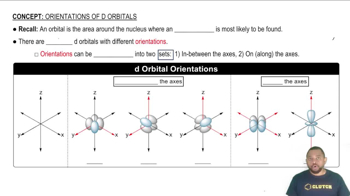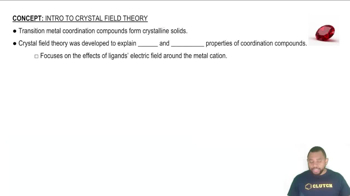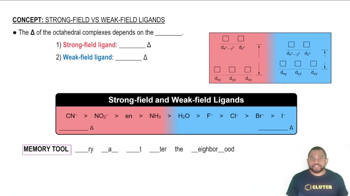Here are the essential concepts you must grasp in order to answer the question correctly.
d-Block Elements and Color
Transition metals, such as chromium (Cr) and yttrium (Y), have partially filled d-orbitals. The color of a transition metal ion in solution is primarily due to the presence of d-electrons, which can absorb specific wavelengths of light. When these d-electrons transition between energy levels, they absorb certain colors, resulting in the observed color of the solution.
Recommended video:
Crystal Field Theory
Crystal Field Theory explains how the arrangement of ligands around a metal ion affects the energy levels of its d-orbitals. In the case of Cr3+, the presence of ligands causes a splitting of the d-orbitals, allowing for electronic transitions that absorb visible light, leading to the violet color. In contrast, Y3+ has a full d-subshell, resulting in no such transitions and thus no color.
Recommended video:
The study of ligand-metal interactions helped to form Ligand Field Theory which combines CFT with MO Theory.
Ligand Field Strength
The strength of the ligands surrounding a metal ion influences the extent of d-orbital splitting. Strong field ligands cause greater splitting, which can lead to more significant color differences. In the case of Cr3+, the ligands create a suitable environment for electronic transitions, while Y3+ does not exhibit such transitions due to its electronic configuration, resulting in a colorless solution.
Recommended video:
Strong-Field Ligands result in a large Δ and Weak-Field Ligands result in a small Δ.




